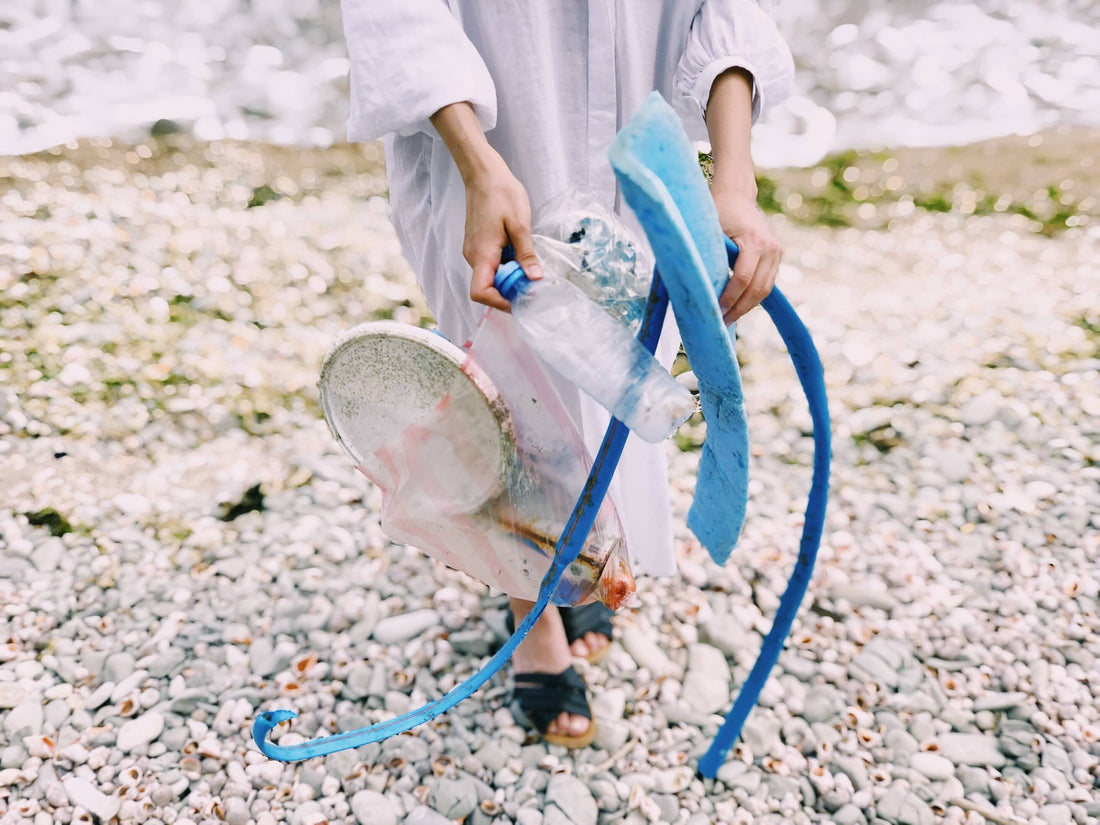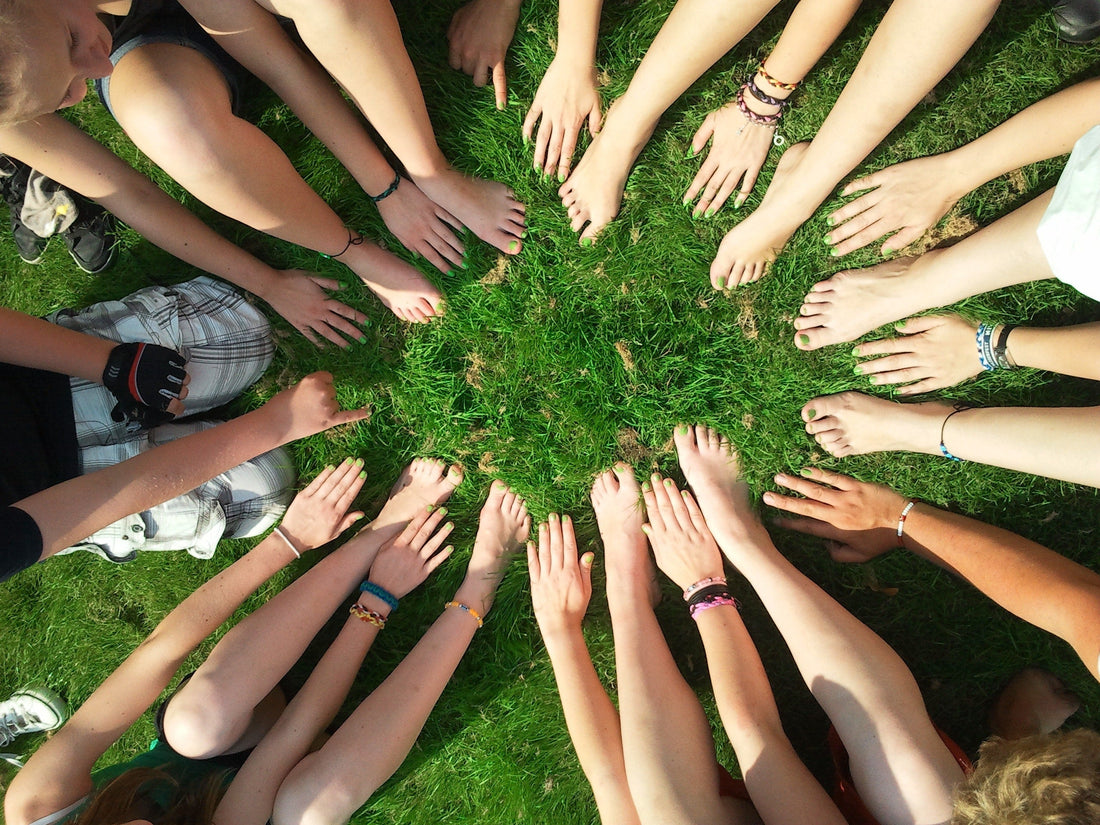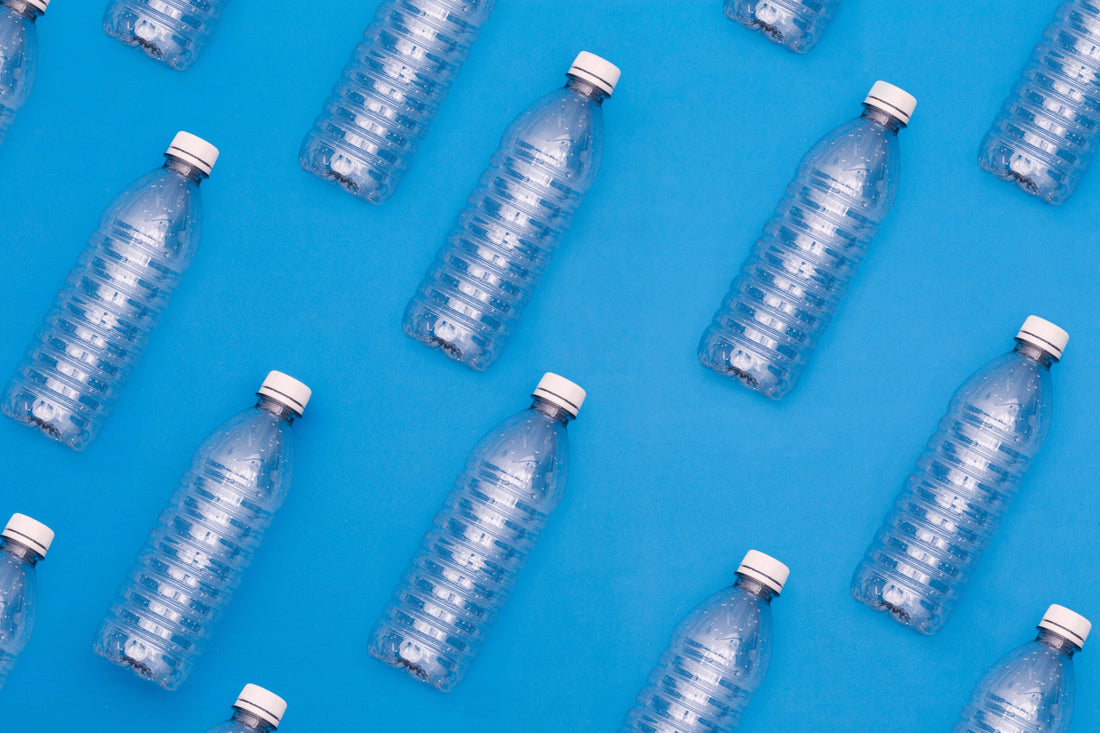Blogs - Interesting Blogs & News
Why Is Plastic Bad for the Environment?
You've probably noticed that many of your favourite brands are making an effort to go plastic-free. Governments are slowly introducing bans on disposable plastics, and you might be adjusting to bringing your own mesh bag to the grocery shop. You might have also asked yourself why is plastic bad anyway? How Does Plastic Harm the Environment? You may already know some reasons why plastic is bad for the environment but let's refresh. Firstly, plastics are mostly made from oil, a non-renewable material that's impossible to extract without causing damage to the environment. Not only does drilling and extraction disturb wildlife habitats and cause pollution in local communities. But the whole process releases millions of tonnes of carbon dioxide into the atmosphere each year. Secondly, plastic doesn't disappear. Not for a very, very long time! As you probably know, plastics can take hundreds of years to degrade fully. As we use plastic products much faster than they can break down, we now accumulate more plastic waste every day. That occupies a lot of space on our planet and causes problems on land, underground, and oceans! Why Is Plastic Bad for the Ocean? Littering, fly-tipping, and poor plastic waste management means that a huge portion of our plastic waste is in waterways and oceans. When the plastics break down into smaller pieces, sea life and birds often mistake the pieces for food. Moreover, plastic waste tends to collect in places like the Great Pacific Garbage Patch – often called the Plastic Soup. Once it's broken down into tiny pieces, most plastics float below the surface, making it difficult to remove. Why Is Plastic Bad for You? Countless studies show a connection between BPA and other plastic chemicals and health issues and conditions caused by hormone imbalances. This is because plastic chemicals can leach into water. So, even if you buy a bottle of pure mineral spring water, it will be contaminated with plastic chemicals and microplastics. Why is Plastic Bad for Recycling? Yes, you can recycle some types of plastic into another product. However, many of the most common plastic products, such as food packaging, takeaway containers, and plastic bags, are not accepted at recycling facilities. This is because recycling these types of plastic is not economically viable or unsuitable for recycling. Instead, these non-recyclables go to landfill sites or incinerators. And, if you've accidentally put a non-recyclable plastic in with the recyclable plastics, the whole batch could get thrown away. Of course, recycling high-quality plastics helps to minimise plastic waste. But plastic fibres aren't like metal or glass because they degrade, meaning that you can only reuse them a few times. That's why recycling plastic is a bad solution to the plastic problem. Why Are Plastic Water Bottles Bad When They're Reusable? Reusable plastic bottles are definitely an improvement on single-use plastic bottles. Obviously, if everyone switches to reusable plastic water bottles, we're going to see a reduction in plastic waste. Less disposable bottles equal less waste. Why are plastic bottles bad for the earth? Even reusable plastic bottles have their drawbacks. Plastic, whether it's single-use or reusable, is still made from a non-renewable source and still poses the same problems when it degrades. Even reusable plastic bottles contain and release synthetic chemicals when they break down. Likewise, reusable plastic bottles still have many of the same health risks as disposable bottles. Particularly if you put hot beverages in a plastic bottle. Also Read: Why you should stop reusing single-use plastic water bottles. Why is Plastic Bad? From toxic chemicals and floating garbage patches to health risks and pollution, there are multiple reasons why plastic is bad for the earth. The only sustainable solution is to minimise our plastic waste and stop using plastic water bottles. Instead, you can pick up a durable, reusable water bottle made from a 100% recyclable material. Food grade stainless steel is ideal because it's non-toxic, recyclable, and safe to use with hot drinks. Why not choose your eco-friendly water bottle from the FLASKE Collection today?
Learn moreTop Ten Eco-Friendly Living Tips
Whether you're going green to save money, improve your health, or help the environment, every step towards eco-friendly living is a step in the right direction. If you're new to the concept of eco-friendly living, then you might not know where to start. Don't be discouraged. Adopting an eco-friendly lifestyle is a journey that will take time to adjust to. Here are ten eco-friendly living tips to help you on your way. Top Ten Tips for Eco-Friendly Living Living an eco-friendly lifestyle is not as hard as you think. Use these ten easy eco-friendly living tips to become more sustainable in your daily life! Ditch Single-use Plastic Look around your home. Take note of how many single-use plastic items you see. Single-use plastic is everywhere, especially in our kitchens, but reducing your dependence on single-use plastic is easier than you might think. Bringing a reusable cotton tote when you go shopping and purchasing loose fruits and veggies will significantly reduce the plastic in your home. You can also stop buying bottled water. Instead, take a reusable water bottle everywhere you go. Buy Eco-Friendly Living Products Everything you buy has a carbon footprint. If you want to adopt eco-friendly living principles, you'll need to start shopping more carefully. Try searching for environmentally conscious companies that sell eco-friendly living products, such as reusable water bottles and plastic-free cleaning products. Other eco-friendly products to look out for include natural toiletries and alternatives to single-use plastics. Repair, Reuse, Recycle You've probably heard of the Three R's before, but do you use them in your daily life? When something is broken, take it to your local repair shop before putting it in the trash. And, if something can't be fixed, can you find another use for it? Can you upcycle it? Remember that recycling is an energy-intensive process that should be a last resort. So, always repair and reuse before recycling. Drive Less If it's possible to travel by public transport, carshare, cycle, or walk, do so instead of driving. You can reduce your environmental impact by driving less or switching to an electric-powered vehicle. People who live on public transport routes or near a city centre may not need a car at all. Alternatively, choose a fuel-efficient or electric vehicle when you need to drive. Make sure you inflate the tyres properly and reduce your speed to the optimum level for your car. Reduce Food Waste In developed countries, we waste millions of tonnes of food every year. Aside from wasting your money, throwing out tons of food leads to increased greenhouse gases released from landfill sites. Storing fresh produce correctly can help you reduce the amount of food you waste. So can a set of reusable food storage containers. Try putting your leftovers from dinner into a reusable food pot and eating them for lunch the next day. Eat Less Meat You don't have to switch to a 100% plant-based diet to live an eco-friendlier lifestyle. But reducing the amount of meat on your plate, particularly red meats, is one of our eco-friendly living tips. It's no secret that animal agriculture is highly unsustainable and a major contributor to greenhouse gas emissions. What's more, regularly eating low-quality meats isn't great for your health. Taking meat off the menu a few days a week will help to keep the planet clean and your body healthy. Switch to Renewable Energy Renewable energy is now widely available and highly affordable. Switching to a 100% renewable energy supplier may save you money and help you live more sustainably. Plus, if you own your property, installing solar panels on your roof lets you benefit from free electricity! Shop Locally Clothes, food, electronics, or other items, the closer to home you buy your products, the fewer miles they will have to travel. Transporting food and other commercial products increases their carbon footprint. So, support your local economy and buy locally produced goods whenever you can. Say No to On-The-Go Plastics Like reducing the single-use plastics in our household, eliminate the single-use plastics that you use away from home. Saying no to disposable plastics can be challenging, but it's easy if you're organised. Remember to travel with a refillable water bottle and take an insulated travel coffee mug whenever you want a takeaway coffee. Bring your own reusable bag, buy snacks in recyclable packaging, or sit to eat instead of getting a takeaway. Also Read: How to tackle waste with your morning coffee routine. Grow Your Own Growing fruits and vegetables at home is a rewarding way to reduce your carbon footprint and save money. If you have a back garden or an allotment, you're already set to grow! Growing your own food isn't limited to homeowners though. Anyone living in an apartment or renting a flat short-term can try growing herbs, shallow-rooted veggies such as spring onions, lettuce, and leeks, or fast-growing fruits like strawberries and raspberries. All you need is some window boxes, hanging baskets or small pots. Want more tips and advice for eco-friendly living? Why not subscribe to the FLASKE Blog so that you don't miss out on our eco-friendly living tips and sustainable product updates.
Learn moreYour Questions Answered: What Does BPA Free Mean?
BPA free is a phrase you’ve probably come across hundreds of times, whether you’re shopping for plastic utensils in your local supermarket or buying a reusable water bottle. But what is BPA and what does BPA free mean? Unless you have a keen interest in chemistry, you probably only know two things: BPA is bad, BPA free is good. So, we’ve written this post for anyone who wants to know more about this common chemical. What is BPA? BPA is an stands for Bisphenol A, a synthetic chemical that has been commonly used in the production of polycarbonate plastics and epoxy resins since the 1960s. It’s typically used to strengthen plastic but has also been found in dental products, toiletries, household electronics, and grocery receipts. Because many food and drink containers are made from polycarbonate plastics, BPA is frequently found in water bottles. However, it’s also used as a liner in many metal containers. Is BPA Bad for Your Health? Although Bisphenol A is a useful compound, it’s been proven to leech. Leeching is a problem for containers that are not BPA-free because the chemical can seep into the foods and drinks that you then consume. One of the main problems with plastic is that as it wears, it releases chemicals. So, the more you use a plastic bottle, the more chance your water is being contaminated. That’s why you should never reuse single-use plastic bottles. Although small amounts of BPA in humans may not cause huge health issues, the chemical has been linked to hormonal imbalances. Because BPA has a similar structure to oestrogen, it can affect hormone-related processes such as growth, reproduction, weight gain/loss, and energy levels. High levels of BPA may also affect development in babies and young children. That’s why several countries have already restricted the use of BPA in children’s products. What Does BPA Free Mean? Because of the discussions surrounding Bisphenol A, many manufactures have chosen to remove BPA from their products. So, plastic products, including plastic water bottles that are BPA free, do not contain Bisphenol A. Are BPA Free Plastic Water Bottles Safe to use? Not necessarily. Many reusable plastic water bottle manufacturers get around the issue of toxic chemicals in plastic by advertising their products as BPA free. Although removing BPA from plastic water bottles is a step in the right direction, other chemicals in plastic may have similar effects on our health. For example, Bisphenol S (BPS) and Bisphenol F (BSF) have a similar structure to BPA. They may impact our hormone levels in the same way as BPA. There’s also a long list of Bisphenol variations (BPZ, BPAF, BHPF, BPP, and so on) which you probably haven’t heard of. And, they probably won’t be listed on the product’s label. Unfortunately, plastic and BP chemicals are everywhere, so it’s very hard to avoid them completely. However, you can minimise your exposure to BPA and other synthetic compounds by switching from plastic and tin to stainless steel or glass containers. Are FLASKE Water Bottles BPA Free? Yes. All FLASKE products are made from food-grade stainless steel. Because food-grade stainless steel is non-toxic, rust resistant and corrosion resistant, it doesn’t need a liner. That means our reusable water bottles, travel coffee cups, and insulated food pots are 100% BPA free. They’re also free from other toxic chemicals you would usually find in disposable and reusable plastic bottles. Read why stainless-steel water bottles are better than plastic to learn more about the problems with plastic. Now that you know what BPA free means and its negative health effects, we hope you’ll ditch plastic water bottles for good. High quality, BPA free metal bottles are safer for you and safer for the environment. So, visit the FLASKE Collection to order a stainless-steel reusable water bottle with your name on it.
Learn more



